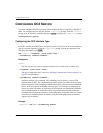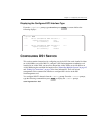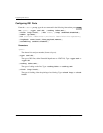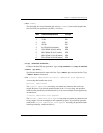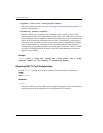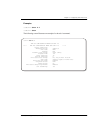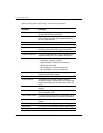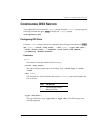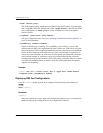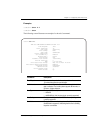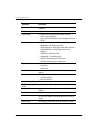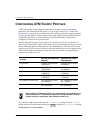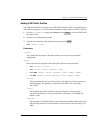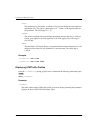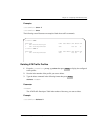
Configuring DS3 Service
150 Avidia System Configuration and Management User Manual
[-mode (direct|plcp)]
The ATM mapping setting, which sets how ATM cells map to DS3 frames. Type the option
that is compatible with your DS3 network, either -mode direct to directly map ATM
cells to DS3 frames, or -mode plcp to use the ATM Physical Layer Convergence
Protocol (PLCP).
[-loopback (none|local|line|remote)]
The type of loopback to start, if any. See “Initiating Communication Path Loopbacks” on
page 345 for information.
[-scrambling (enable|disable)]
Enables or disables cell scrambling. Cell scrambling, used in Avidia, is not an ATM
defined format for DS3, but is implemented by many vendors. An ATM cell has two parts:
header and payload. Cell scrambling scrambles the payload so that it does not resemble the
header. In the event that an ATM network looses sync, it will attempt to synchronize on
what it sees as the cell header. In some cases, the cell payload can resemble the cell header,
so the network attempts to synchronize on the cell payload rather than the cell header.
Scrambling the cell payload precludes it from looking like a cell header. Choose to enable
or disable cell scrambling based on whether or not the ATM equipment in the network
supports cell scrambling.
Example
::ds3=> set 12.1 -clock local -lbo 0 -type cbit -mode direct
-loopback none -scrambling enable
Displaying DS3 Port Configurations
From the ::ds3=> prompt, type the show command in the following format then press
.
show [<port>]
Parameter
[<port>]
The port for which you want to display the configuration (format slot.port). Omitting this
parameter displays the configurations for all configured DS3 channels.
ENTER



